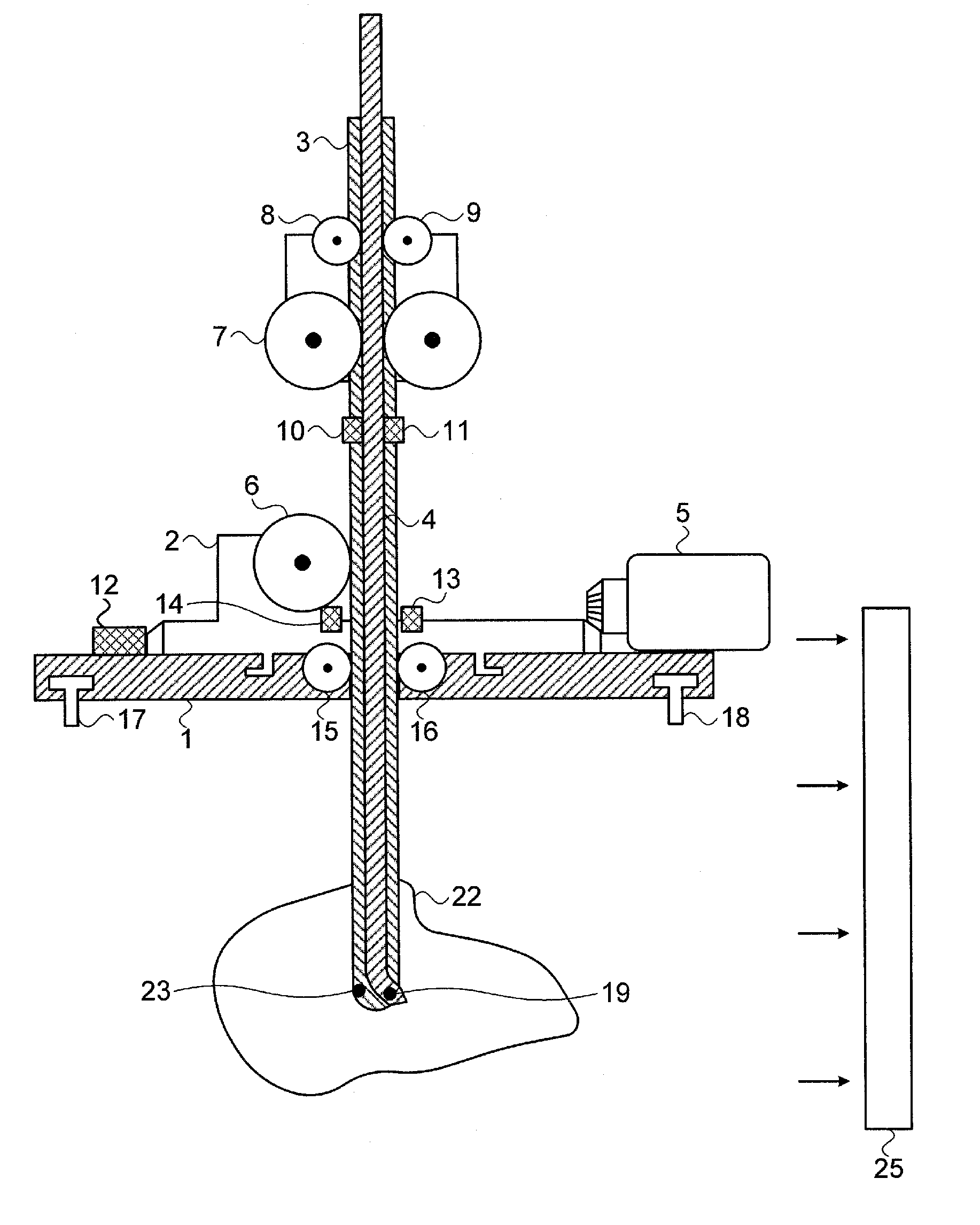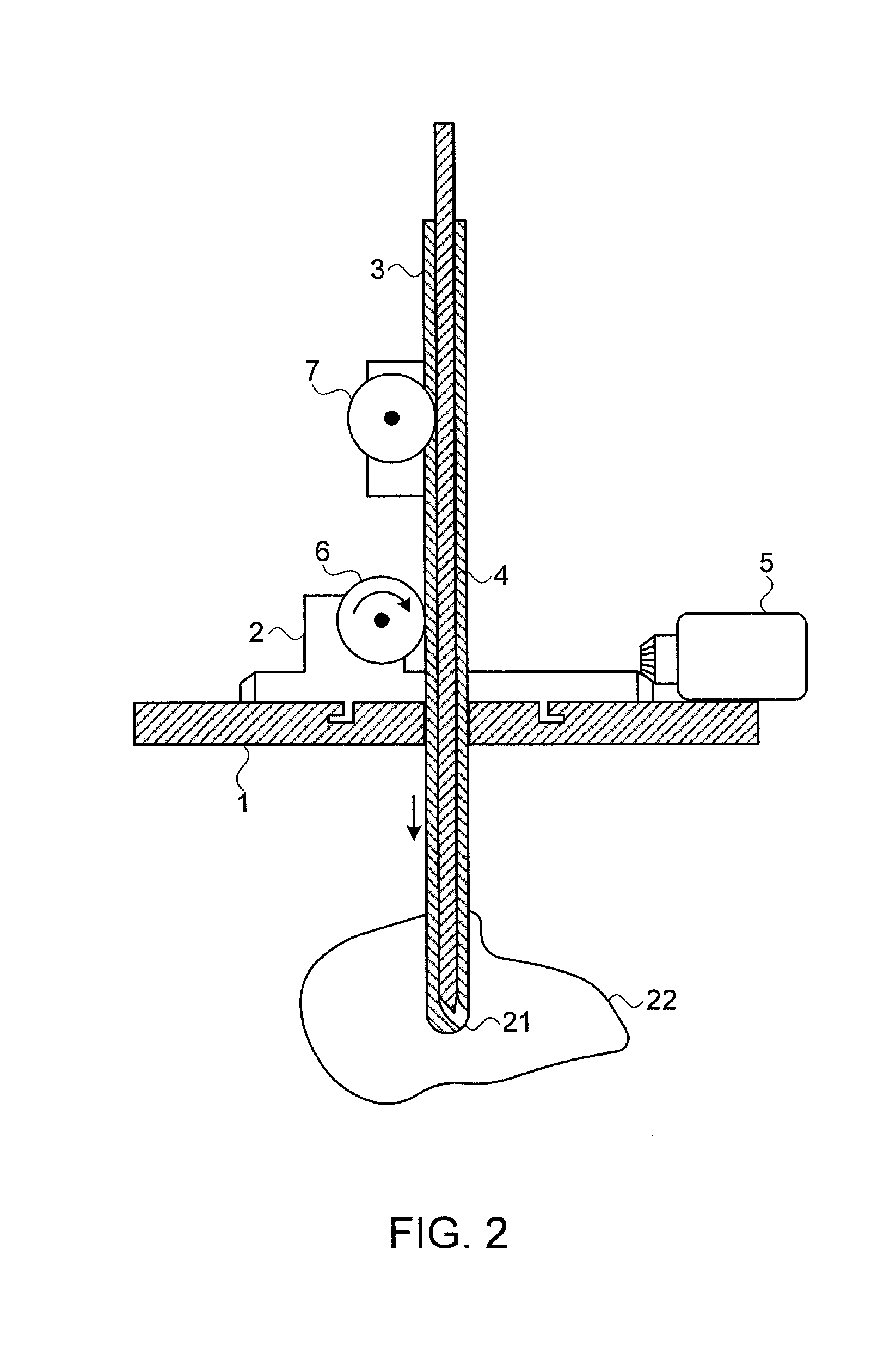Robot for minimally invasive neurosurgery
a robotic and neurosurgery technology, applied in the field of robotic systems, can solve the problems of debilitating patient side effects, complex brain surgery, traumatic open skull surgery, etc., and achieve the effects of reducing brain shift, accurate positioning and movement, and maintaining the spatial accuracy of preoperative images
- Summary
- Abstract
- Description
- Claims
- Application Information
AI Technical Summary
Benefits of technology
Problems solved by technology
Method used
Image
Examples
Embodiment Construction
[0046]Reference is now made to FIGS. 1A and 1B, which illustrate schematically an exemplary implementation of a robotically controlled neurosurgical apparatus according to the novel designs presented in this disclosure. A central feature of this neurosurgical robot implementation is a combination of a flexible needle 4 which can be controllably inserted into an external rigid cannular needle 3. Although the flexible needle is shown in the drawings of this disclosure as a solid needle, it can, as previously mentioned, be either solid or cannulated. The shape of the external rigid needle is shown in FIG. 1B. At its distal tip 21, the bore of the external needle is diverted laterally, so that the distal opening is directed sideways from the bore of the needle, at an angle to the axis of the bore of the needle. In FIGS. 1A and 1B, the exit angle is shown as approximately 45° to the cannula axis, though it is to be understood that this angle can be selected to enable ease of passage of t...
PUM
 Login to View More
Login to View More Abstract
Description
Claims
Application Information
 Login to View More
Login to View More - R&D
- Intellectual Property
- Life Sciences
- Materials
- Tech Scout
- Unparalleled Data Quality
- Higher Quality Content
- 60% Fewer Hallucinations
Browse by: Latest US Patents, China's latest patents, Technical Efficacy Thesaurus, Application Domain, Technology Topic, Popular Technical Reports.
© 2025 PatSnap. All rights reserved.Legal|Privacy policy|Modern Slavery Act Transparency Statement|Sitemap|About US| Contact US: help@patsnap.com



